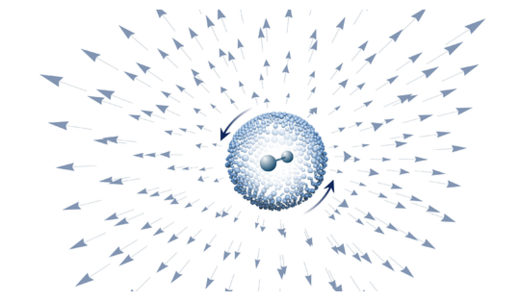
© Gizmodo
You might have scoffed at the "f....in' magnets, how do they work" line from the Insane Clown Posse song "Miracles," but if we're being honest here, magnets are pretty nuts. Take any old bar magnet and cut it in half and it will still have a North and a South pole. Keep cutting, you'll never end up with a single North or South pole. Whoever discovered a fundamental magnetic charge, like a single pole, would likely win the Nobel Prize.
A team of physicists at Institute of Science and Technology Austria haven't done quite that, but
they have realised that some collections of molecules behave as if they were "magnetic monpoles," magnets with only one pole. Others have observed similar phenomena, but this one is perhaps most striking in its simplicity. In fact, other teams have probably created the conditions for these properties to manifest all along, but no one went looking for them.
"We analysed expeirments that have been done by other groups. What people do now is put a molecule in superfluid helium. This has been done for 20 years. The main focus was to study the property of molecules," Mikhail Lemeshko from IST Austria told Gizmodo. "They weren't measuring this particular property but were creating monopoles in their experiments by creating something else."
So why should you care if a monopole exists? Well, the most basic equations governing electricity and magnetism are called Maxwell's equations. There are four of them, two for magnetism and two for electricity that look like near mirror images. However, where the electricity equations imply the existence of single electric charges, the magnetic equations do not. People have long assumed that monopoles could possibly exist to make the equations look nicer. Since Maxwell, others have found that monopoles might make some particle physics ideas used to explain our strange Universe look much cleaner.
Lemeshko's team didn't find a single particle, but a quasiparticle that behaved like a single magnetic pole. Quasiparticles occur when many particles, when together, appear to act in a mathematically similar way to single particles moving in simpler ways -- like using the idea of a "hole" to represent "a place where all of the dirt has been removed." In this case, Lemeshko's team calculated the behaviour of a rotating molecule inside a sphere of superfluid helium, called an "
angulon."
This time around, they took a look at the maths and realised that this system had taken on the properties of a magnetic monopole from the view of the molecules inside of the sphere. As far as Lemeshko could tell, no one else had realised this. They published
their results Wednesday in
Physical Review Letters.It's not the first time someone has engineered a magnetic monopole -- but it's an interesting system where monopoles have been present all along and they seem to exist as part of nature. James Pinfold, spokesperson of the Monopole and Exotics Detector at the Large Hadron Collider, thought this monopole was especially interesting for that reason. "They have used matter to assemble it, but they didn't glue it together and make it look like a monopole," as other experiments he's written about
have. "Nature has come up with an entity like this which is very interesting." He also pointed out that the experiment could help characterise the behaviour of the monopole his team is hunting for.
"But it's not a real monopole," he added. He surmises that some sort of fundamental magnetic monopole should be built into the very fabric of the universe, though that
hasn't been discovered yet.This quasiparticle monopole may one day have applications, though, in advanced technologies like quantum computers or in studying chemical systems. Such applications are far away, said Lemeshko.
What's coolest is that this monopole quasiparticle was probably there all along.
"The importance of this particular work is that you can realise the magnetic monopoles much easier than previously thought," said Lemeshko. "Instead of some complex system you have something that's already there and can use the same experiments developed for completely different purposes."
Reference: Physical Review Letters - Emergence of Non-Abelian Magnetic Monopoles in a Quantum Impurity Problem
You can download a copy of the complete equations at: [Link]
A discussion about the equations and their utility is here: [Link] along with more download links to his original publication [Link] and a breakdown why they were modified to their currently known form. [Link]